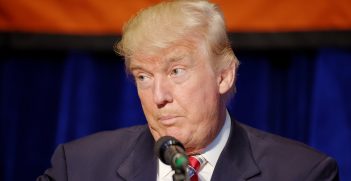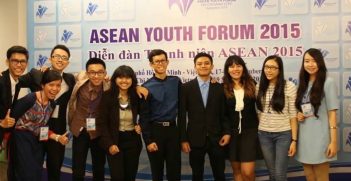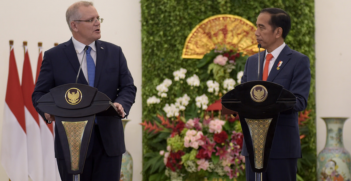Youth Engagement in Southeast Asian Elections

Despite their regional proximity, the political engagement of youth in recent major elections in Indonesia, Thailand and Cambodia has differed from the very vocal to the more subtle and secretive, reflecting the distinct challenges in each nation.
Southeast Asia has experienced three major elections within the last two years. Indonesia’s combined elections on 17 April 2019 — for presidential, regional and legislative seats — amounted to the elections with the highest turnouts ever recorded, with the incumbent President Joko Widodo winning a second term. Thailand’s election on 26 March 2019 was also politically momentous as it legitimised the military rule that was established in the 2014 military coup. The Cambodian elections on the 29 July 2018 resulted in the victory of Hun Sen and the Cambodian People’s Party (CPP), arguably a product of systemic repression and authoritarianism.
Nearly half of eligible voters in the 2019 Indonesian election were young people between 17 and 35 years old. Many of them were first-time voters. This large number of young voters influenced the campaign strategies of running political parties, which incorporated rock concerts, social media engagement, outfit selection of candidates and memes.
The creation of the Indonesian Solidarity Party (PSI) was one notable attempt to secure the votes of young Indonesians. PSI primarily campaigned on overthrowing the oligarchy and bringing youth to Parliament. This newly-established party gained immediate popularity among millennials and attracted millions of online followers and subscribers. The party often touches on corruption issues and assertively advocates for tolerance, human rights, open democracy and freedom of speech. In less than five years from its creation, its social media followers came within close margins to the ruling party and main opposition, both of which have been well established for decades. PSI also managed to attain around 650,000 official members as well as thousands of actively involved volunteers. PSI’s rapid rise indicates Indonesian youth are politically engaged, in contrast to the widespread political apathy among young voters in the 2014 presidential elections.
From PSI’s promising statistics, the party was expected to easily surpass the 4 percent voting threshold to be seated in the House of Representatives (DPR). The party, nevertheless, did not make it to the DPR. The demographics of the voting results also show that the votes of young people were far from homogeneous.
Establishing unity among Indonesian young people remains a challenge, especially in the political arena. Young Indonesians still find insufficient appeal in Western notions of human rights and freedom of expression, or even the fight against oligarchy and corruption. Economic factors like job opportunities and income stability — and social factors like education, cultural manners and religion — all played a bigger role in attracting Indonesian millennials.
Thai youth, on the other hand, are very vocal in pursuing an open and democratic Thailand. With youth making up 15 percent of Thai eligible voters, upholding civil liberties, allowing LGBTQ movements, legalising marijuana and addressing environmental concerns all became key electoral issues as Thai political parties sought to attract the votes of young people.
Aimed at representing the voice of Thai youth in a similar way to PSI, the Future Forward Party (FFP) was established in 2018. The party outspokenly challenged the current military oppression and promised to increase transparency in governance, the political voice of the people and adherence to human rights, while also pledging to exterminate corruption among business and political elites. Despite being established only one year prior to elections, the FFP managed to secure 31 constituency seats in the Thai Parliament and the third largest number of voters. These results were second only to the ruling party and Pheu Thai Party, which held the majority of voters in the previous election. Thai youth also initiated protests in streets and universities, chanting for democracy and expressing resentment against military authoritarianism. Unlike youth in Indonesia, they were effectively united in advocating for freedom of expression and Western-founded liberal principles.
In the midst of heavy military repression and political constraints, Cambodian youth are relatively more hesitant in their political movements. Though youth made up 46 percent of Cambodia’s eligible voters, it seemed highly unlikely that Cambodian youth could disrupt the 33 years of Hun Sen’s leadership. Moreover, following the dissolution of the main opposition party, the Cambodian National Rescue Party (CNRP), Hun Sen’s CPP arguably became the sole running party of the election. This led frustrated Cambodian youth to support the “Clean Fingers” campaign that started among CNRP members.
The Clean Fingers campaign was a form of protest, mostly by Cambodian youth, to boycott the fraudulent election and delegitimise the election results. In Cambodian elections, voters must dip their finger to ink after casting their ballot to indicate they had voted: someone with “clean fingers” was therefore someone who abstained from voting. Ironically, this campaign was a fight for democracy and resistance against authoritarianism. It attracted massive social media support, particularly on Facebook with the hashtag #CleanFingers. Further, some people were very vocal in supporting the campaign and challenging the government, evidently unafraid of the potential consequences.
The CPP and the police department repeatedly threatened to shut down the campaign, and even pressed charges and imprisoned “fanatic” supporters. In response, many supporters of the campaign secretly posted pictures of their “clean fingers” with the hashtag, but dipped their finger in fake ink before going outside so they appeared to authorities to have exercised their voting rights as obedient citizens of the Khmer Rouge. Though the campaign did not result in concrete changes in government, it showed the political stance of Cambodian youth. Given their one-party state context, Cambodian youth took a more subtle approach than their counterparts in Indonesia or Thailand.
The differences across youth electoral politics across these three countries reflect the diversity of Southeast Asia. Yet despite these differences, young people are crucial — but often undermined — players across the region.
While their voices still only play a minor role in electoral politics, it’s not unthinkable they could be decisive in upcoming elections.
Gabriele Natalia Siahaan is studying International Relations at ANU, and is actively involved in the ANU Indonesian Student Association and the ANU ASEAN Society.
This article is published under a Creative Commons Licence and may be republished with attribution.





